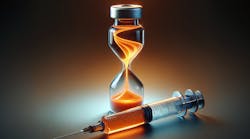After the close of another great CPhI show in Frankfurt, Germany, I decided to take a weekend trip to Amsterdam. While I was thoroughly prepared for the city’s unique character (growing up near NYC and spending eight years playing roller derby has set the bar pretty high in terms of what might possibly shock me), as a frequent traveler, I’m always somewhat put off by “touristy” destinations. Being spoon-fed a watered-down version of an entire country’s culture via tours, shops and restaurants all designed specifically for tourists is not my favorite - and yet, Amsterdam is truly a must-see for any world traveler.
The amalgamation of people and cultures you’ll see simply walking down the streets in Amsterdam is fascinating. There was a large group of people that specifically caught my eye because of their unique “steampunk” attire. For those not familiar with steampunk, while it has origins in classic authors such as H.G. Wells and Jules Verne, it later spiraled into a cultural movement that has found its way into everything from movies to video games to fashion (a few years ago even Prada introduced a steampunk menswear line).
At its most basic level, the movement is rooted in the idea of imagining the future from the view of those living in the Victorian era, assuming that future technological advancement would be powered by steam.
You’re wondering how I’m going to connect this to biopharma, aren’t you? Hold my Victorian beer. The biopharma industry in general can be characterized by the use of advanced technologies and the harnessing of new scientific achievements - all driven by a complex, hi-tech R&D process. And yet, when it comes to making improvements on the manufacturing side, industry surveys (see our cover story) still indicate a reticence toward adopting new technologies.
Like steampunk, biopharma is somewhat of a hybrid genre, combining futuristic advancements with pharma’s traditional cautious attitude toward change. One blog described steampunk as a “non-luddite critique of technology.” This description can fit biopharma as well, especially when it comes to downstream processing. The complexity of biopharma manufacturing historically meant operational excellence took a back seat to quality. The highly regulated industry still favors incremental improvements when it comes to technology, gradually blending new technology into the downstream process. Change for the sake of change alone does not fly in biopharma, as the enormous effort required to execute change in a validated process means new technologies have to prove their worth beyond the shadow of doubt.
Just as steampunk design seeks to tell a story that emphasizes just the right balance between form and function, as the biopharma industry matures, manufacturers are beginning to take a look at their operations, seeking ways to balance both technical and operational excellence (see McKinsey article).
As the biopharma story gradually unfolds, the industry has the potential to truly re-imagine the future of medicine - a future the likes of which was once only romanticized in science fiction plots.





